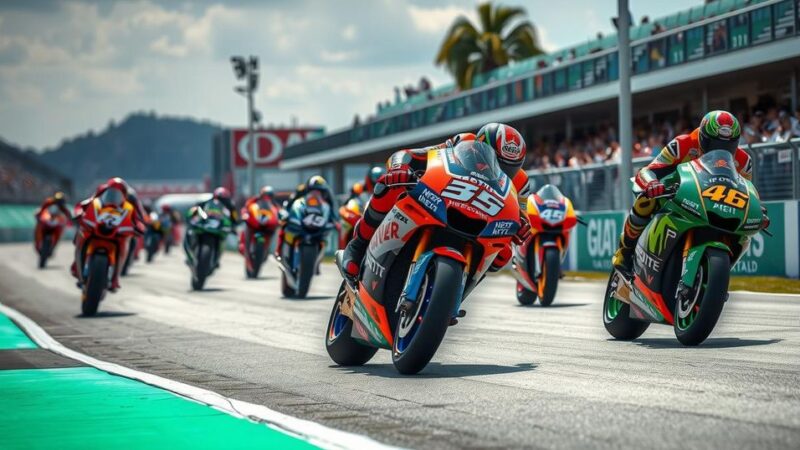The grid for the Brazilian Grand Prix may be determined based on prior practice or sprint qualifying times if qualifying is cancelled due to inclement weather. Current F1 regulations lack definitive provisions for such a scenario, leading to various interpretations among stakeholders. Historical precedence indicates that stewards may decide based on the last competitive session if qualifying cannot occur, maintaining competitive fairness.
The uncertainty surrounding the grid formation for Formula 1’s Brazilian Grand Prix arises due to the postponement of the qualifying session caused by adverse weather conditions. According to the current regulations, if Sunday morning’s weather does not allow for a rescheduled qualifying session, the method to establish the race grid is not explicitly defined in the 2024 F1 Sporting Regulations. This lack of clarity has led to significant discussions among the motorsport community regarding possible interpretations of existing rules. Currently, two articles in the F1 regulations may apply in the event that no qualifying times are recorded. Article 39.4b addresses drivers who are deemed “unclassified”, which typically includes any driver that fails to set a time during the qualifying rounds. This article suggests that the classification for unclassified drivers is based on their positions in the last practice session. Given that the fastest driver in the final practice was Lando Norris, one interpretation could provide him pole position while demoting Max Verstappen due to penalties. However, there is an alternative interpretation suggesting that if qualifying is cancelled but the sprint qualifying session is conducted, drivers who completed laps would still be classified. If this were to be the case, Article 42.3 would dictate the grid positions based on the sprint qualifying results. The International Sporting Code (ISC) has previously resolved similar situations, notably at the 2019 Japanese Grand Prix where rain affected qualifying. At that time, the stewards exercised authority from Article 11.9.3b of the ISC to determine grid formation based on prior performance. Should qualifying be unable to occur in Brazil, a similar approach would likely be taken by the stewards, who could choose to reference the results from the sprint qualifying session or any other criterion they deem appropriate.
The Brazilian Grand Prix is one of the significant events in the Formula 1 calendar, showcasing thrilling races amidst passionate local fans. The potential for adverse weather conditions, particularly rainfall, can heavily impact the race weekend’s schedule, including qualifiers. Typically, qualifying sessions determine the starting positions for the race, making their postponement an exceptional situation. In such circumstances, regulations must guide race officials in forming a legitimate grid to maintain fairness and competitive integrity. Observing how similar situations were handled in previous seasons can shed light on potential outcomes for the ongoing event.
In conclusion, the formation of the grid for the Brazilian Grand Prix in the absence of qualifying remains a complex issue due to the vagueness of the current regulations. While historical encounters provide possible frameworks for resolutions, the decision ultimately lies with the race stewards. As a result, the interpretation of existing rules and previous practices may play a vital role in determining how the race grid will be established if qualifying cannot proceed. The outcome will reflect the authorities’ judgment and adherence to established regulations while ensuring fairness in competition.
Original Source: www.autosport.com







